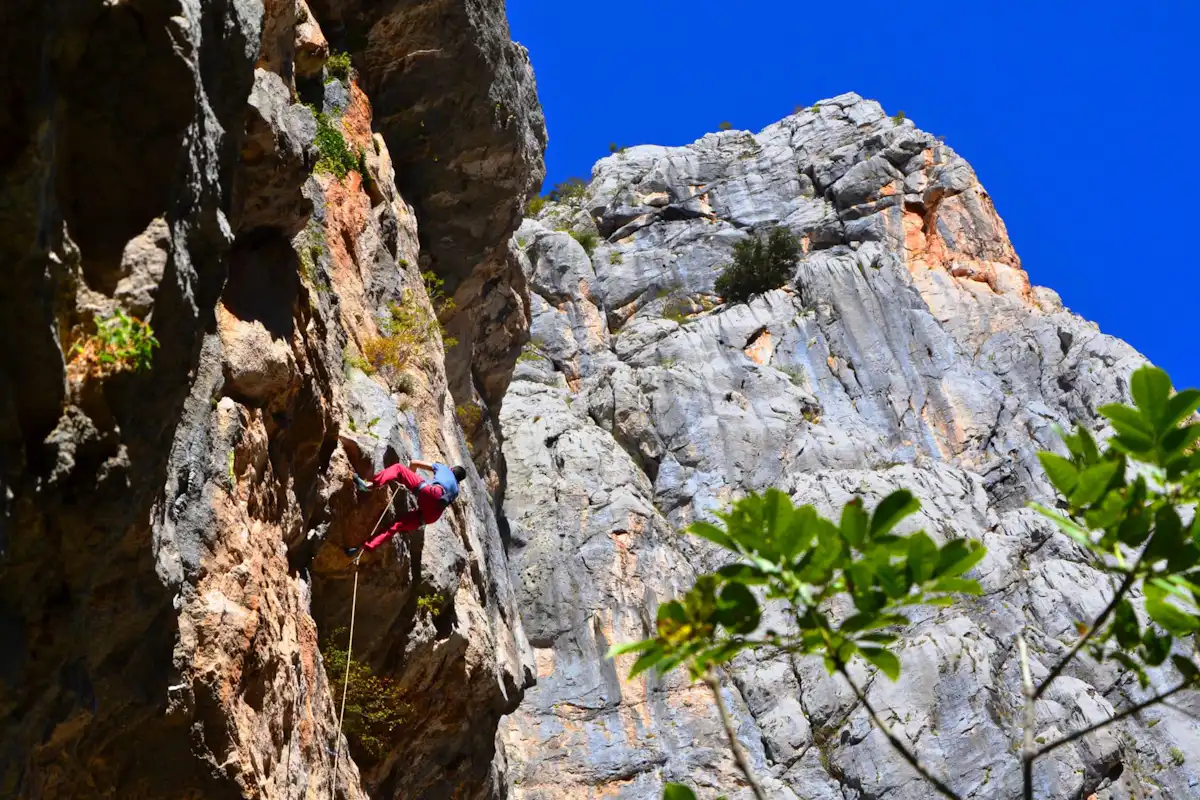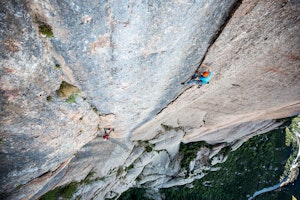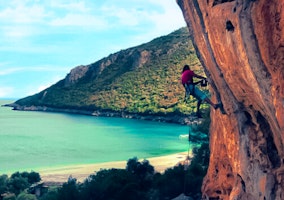Rock climbing is an awesome sport full of challenges and rewards. It’s something you can do from almost anywhere in the world and it's a great way to discover a new place. However, not having the right rock climbing equipment can hold you back. It can also impact your safety. Make your climbs the best they can be by learning what kind of equipment you need.
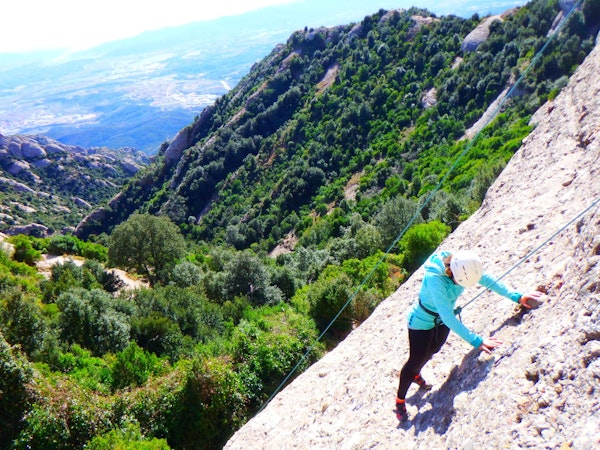 A woman rock climbing
A woman rock climbing
Rock climbing equipment basics
We’ve rounded up a list of the most important items. If you’re just starting out, you won’t have to purchase all this rock climbing equipment yourself. Your guide will be able to lend it to you. You'll also be able to rent most of these items. However, it’s good to get in the habit of knowing what you need for a safe and successful climb. It’s also helpful to pay attention to the equipment during your climbs. That way you can see what works for you and what doesn't. Then, when you’re ready to start investing, you'll be a step ahead of the game.
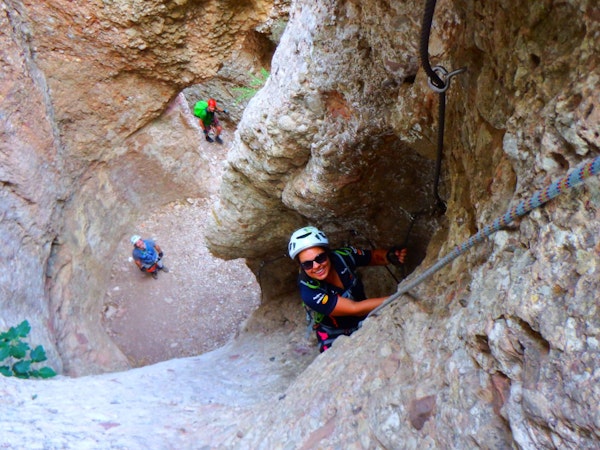 a woman climbing
a woman climbing
Harness
This is a pretty important piece of equipment. There are a lot of options to choose from. When looking for a harness, you’ll see that they have two elements, the waistbelt, and the leg loops. The waistbelt should sit comfortably and snuggly over the hips. It’s a good idea to look out for harnesses with adjustable leg loops.
Another important element of choosing the right harness will depend on what kind of climbing you want to do. Going for a basic harness will save you money and be great for short simple climbs. However, if you’re going to be carrying extra loads look for a harness with extra gear loops. If you know you’ll be climbing for hours on end, it may be worth investing in a lightweight harness.
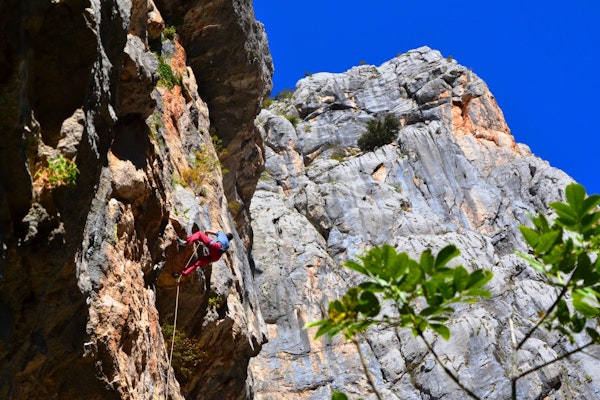 Man climbing
Man climbing
Rope
At first, you'll be getting to grips with other people's ropes, but the time will come where you’ll want to invest. The rope is one of your most important tools as a climber. However, choosing the right rope might seem a bit complicated at first. The most important thing to remember is that any rope you buy must be International Climbing and Mountaineering Federation (UIAA) approved.
You'll find two groups of rope: dynamic and static. Dynamic ropes are best for rock climbing as are more elastic and can soften a freefall. A static rope is stiff and best used for rescues and rappelling.
Diameter and rope length are the main choices you’ll have to make initially. You’ll also have to choose between single, double or twin rope and the treatment of your rope. Single ropes that are around 60-meter ropes with a diameter of 9.5 mm to 10mm is a great start for a beginner.
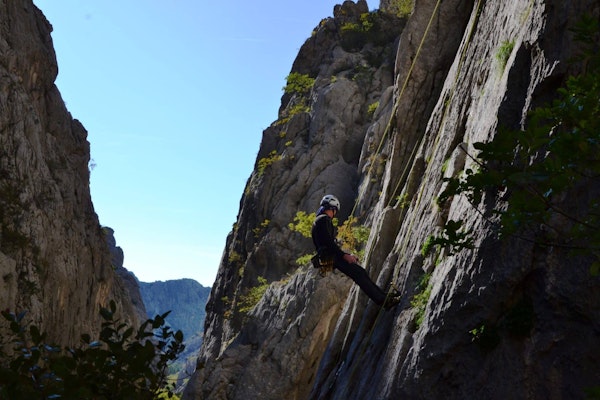 Person descending rock face
Person descending rock face
All that said, the rope you need will depend on your purpose, so it’s important to always do your own research.
Belay System
A belay system helps control any fall you may have. It's also there to help you control your descent if you’re lowering a climber or rappelling. It uses friction to control the rope. Simple tube-style, passive belay devices are the best ones to start with, but you’ll probably be able to rent one when you’re just getting started with climbing.
Helmet
While climbing you almost want to keep safety front and center so we’d always recommend using a helmet when climbing outside. It’s important that you get a helmet that has been specially designed for climbing. These will help prevent any damage from falling debris.
Try on a few to make sure you get one that is comfortable and sits well on your head. It should not feel too loose, nor too tight.
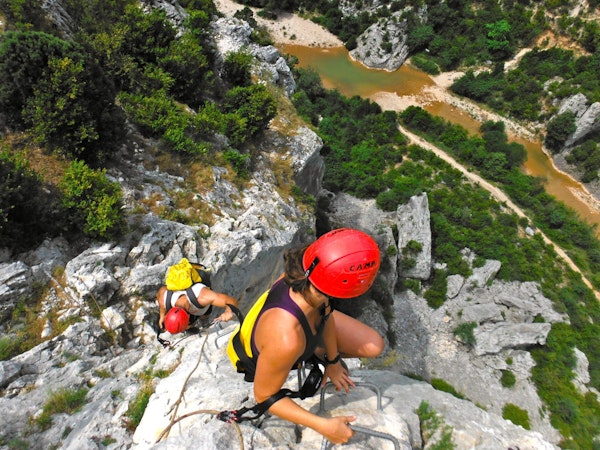 a group of rock climbers
a group of rock climbers
Chalk
Chalk is a great little tool to have clipped on to your climbing harness. You can use it on your hands to remove moisture that might hinder your grip.
Climbing Shoes
Climbing shoes protect your feet and allow you to get a hold of the footholds. Like other climbing gear, there are a lot of options on the market. When you’re starting out, look for a comfortable fit, middle of the range shoe. There are high-performance options out there but you can save them for a bit later on. One tip is only to wear your climbing shoes when you’re climbing. It may sound obvious, but if you use them to walk to and from your car as well, they won't last as long.
Carabiners and Quick Draws
The carabiner is a small strong hero. They are connectors with spring-loaded gates which help you secure the rope to your equipment. They're made to be lightweight and durable and come in a variety of shapes. They can be divided into locking and non-locking. As a beginner, a locking device to use with a belay will probably be the most useful purchase.
A quickdraw is two carabiners joined together by a semi-rigid piece of fabric. They are used to extend the space between the anchoring device attached to the rock and the rope.
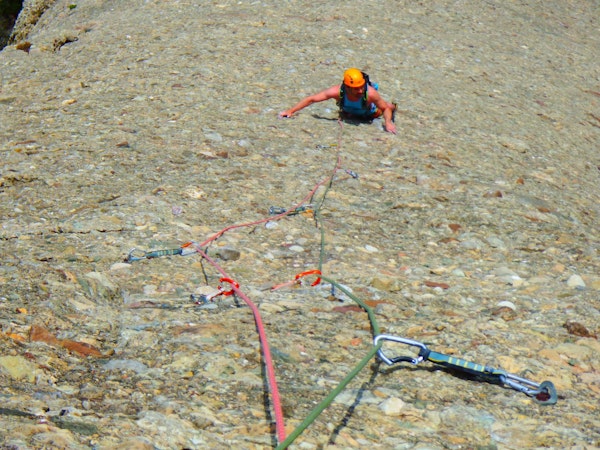 A woman climbing
A woman climbing
Slings
You'll use slings on all your climbs to wrap around sections of rock. They're basically just a sewn loop of webbing. You can use them as runners, anchors or to climb a rope.
Nuts and Camming Devices
These useful bits of equipment fall into the category of climbing protection. They help you secure your rope to the rock. They can also help avoid falling too far a distance.
Ice Axes and crampons
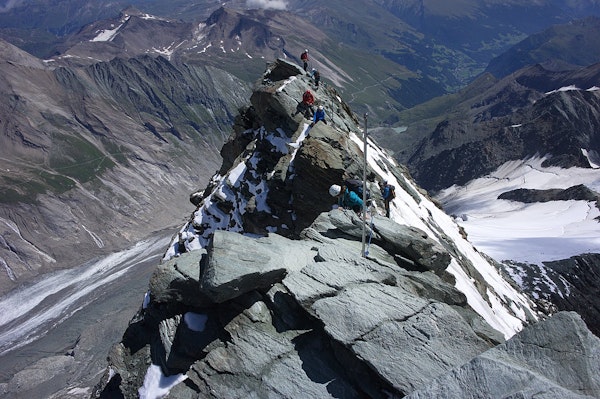 A group rock climbing
A group rock climbing
If you've got your sights set on mountaineering or ice climbing, then you're going to have to get acquainted with ice axes and crampons. Ice axes allow you to grip onto the ice from above. Crampons that you attach to your boots give you the traction you need to connect to the ice. Ice axes are also handy to grab hold of the ice if you find yourself slipping.
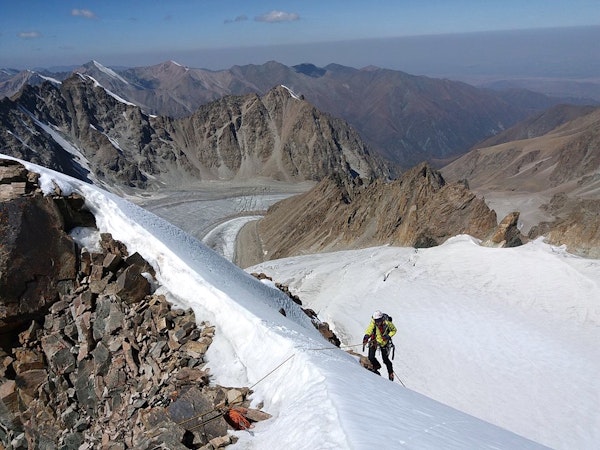 Ice climbing
Ice climbing
With all this in mind, it’s important to choose rock climbing equipment that works best for you. Before you invest, try different gear out and learn more about the equipment that’s out there. Keep reading about rock climbing and the 10 best destinations to climb in the world!
